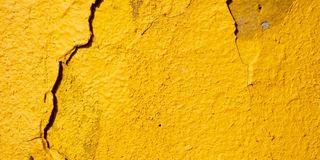Prime
A new coat for that cracking wall

Too much water causes flaking. PHOTO/Greg Rosenke
What you need to know:
It is not uncommon to see the coating of paint on walls peeling off, developing cracks, flaking or developing air spaces. Experts offer solutions.
When asked what causes such issues, John Baptist Mwijukye, a builder with expertise in wall finishing, says that although a number of things can cause this, the major cause is prolonged exposure to moisture or water.
He explained that paint does not react well when exposed to moisture or water for a prolonged time period, which might cause it to peel off or develop air bags underneath it.
“There is a certain paint called weather guard that is more resistant to water and rough conditions, and we often advise people to use this, especially for exterior walls. However, if the walls are overly exposed to water, weather guard can also peel away or be affected.
“Before painting, the painter has to make sure that the surface onto which he is applying paint is thoroughly clean with no loose dust. However, some people don’t do this, and so, they apply paint to a surface that is dirty. As a result, the paint fails to bond onto the surface and over time, it is likely to peel off,” says Mwijukye.
Benjamin Sekitto, a builder, also adds that another reason for peeling paint is if it was applied directly onto the surface without a primer or undercoat.
“There is paint that is specifically designed to come first to provide a first coating before the actual paint is applied on the surface. Having this on the surface before application helps prepare the surface better, giving the final coat of paint a clean surface to land. Absence of this makes it hard for the paint to hold,” he explains.
He also says that everything might be fine but paint may peel off if one is removing something that was previously stuck on the wall.
Solution
To solve this, the damage has to be assessed as Sekitto advises.
“If the part where paint is peeling off is small and there is little damage to the wall, the affected part can be fixed. One can choose to do it themselves or get the services of a professional.
If the problem is a bit more spread, the same can be done and the affected areas can be repaired. However, if the wall or surface has been affected beyond repair, it is wise that it is given a new finish altogether.”
For simple repairs, Micheal Lumu, a civil engineer offers the following steps:
Start by identifying the areas that need to be repaired, where the paint is peeling. In addition, survey the entire wall or surface for any air spaces. These also will need to be repaired since a little pressure on them can easily have the paint flaking.
Using a scraper, scrape back all the loose material around the damaged area or those with air spaces.
Sand the scraped area using sand paper to make it smooth.
Next, apply filler to the area to prepare it and even it out using a scraper. After drying, sand the filler to smoothen it out.
Dust off any loose particles using a cloth and apply undercoat. After this, the area is ready to be painted.
“Painting is easier if the colour of the entire wall is white. This is because different colours often change their hues and so, the new paint may look a shade darker or lighter than the old one. In case this happens, you might want to give the entire wall a coat of the new paint to make it well coordinated. The same can be done if the existing paint is dirty and the repaired area will stand out,” Lumu advises.




